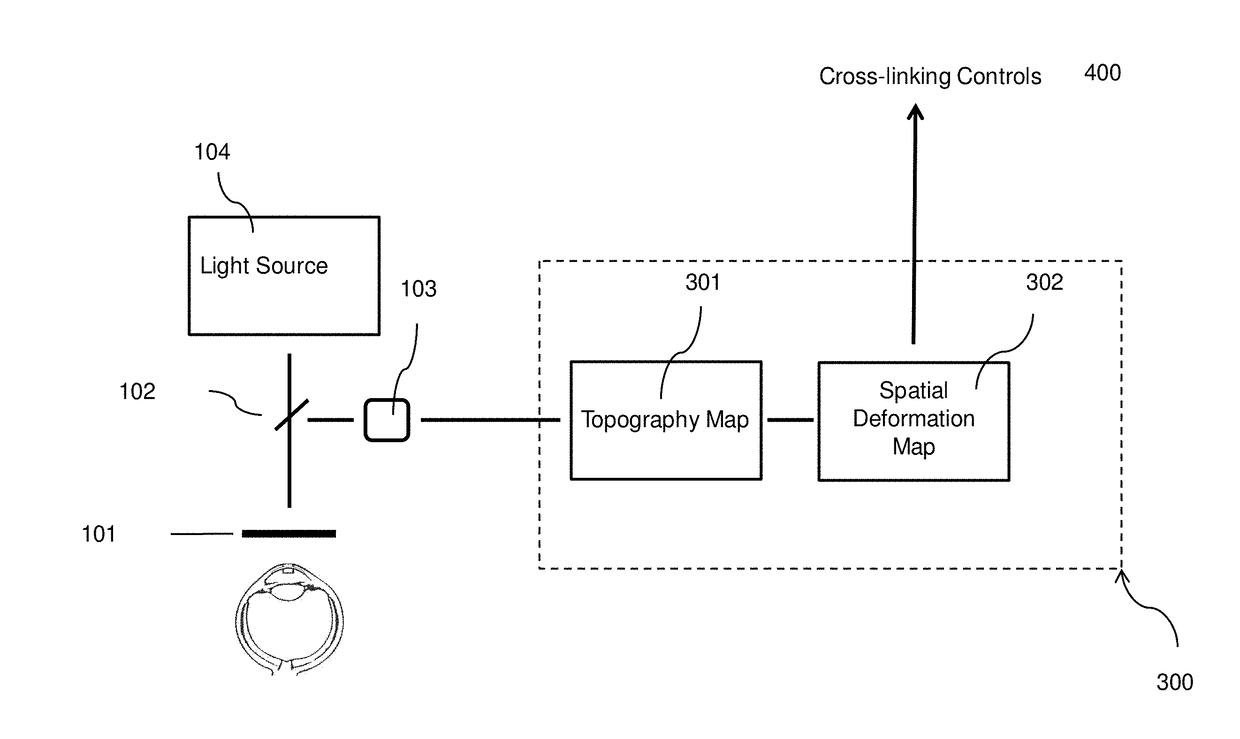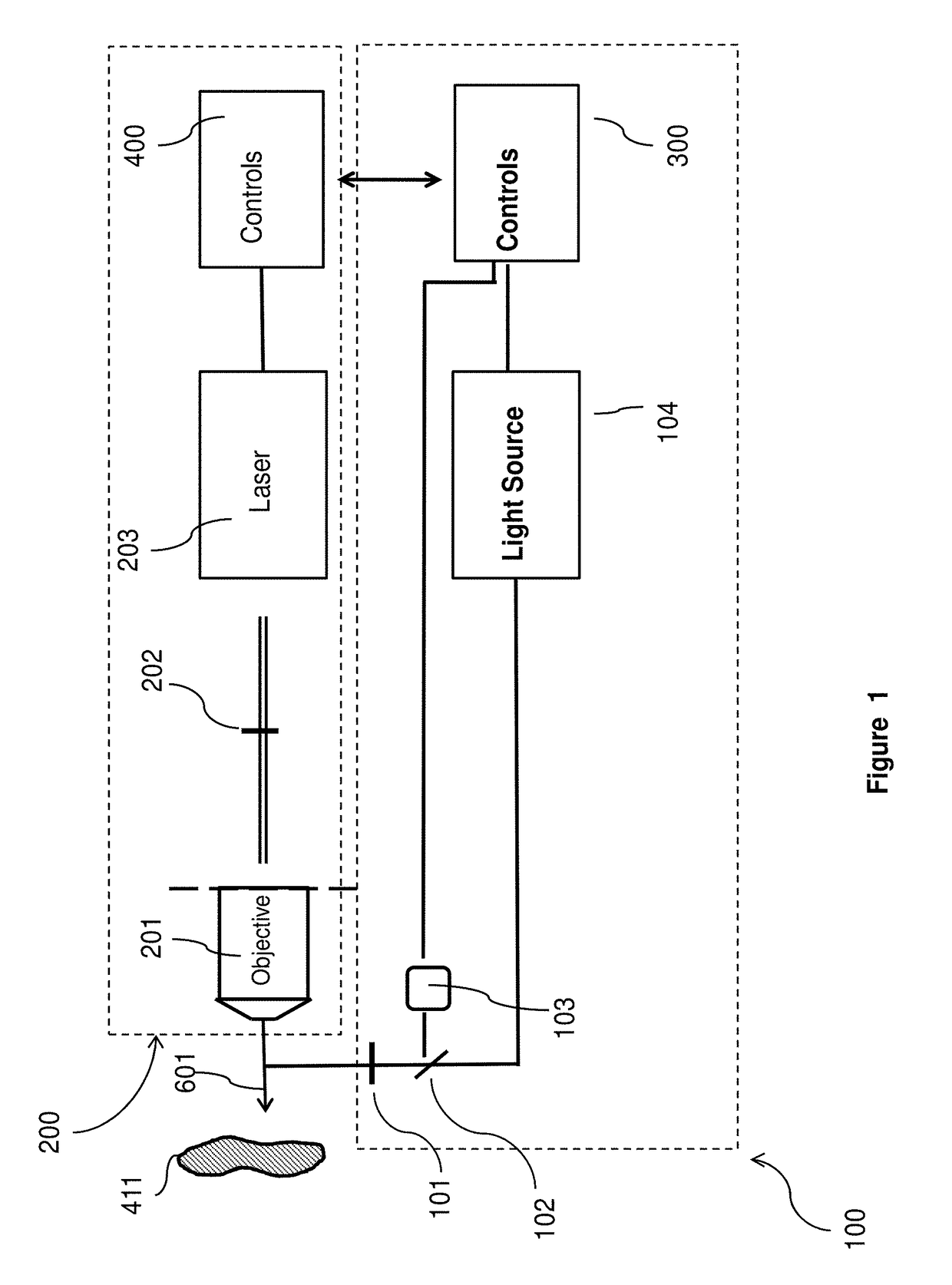Laser Induced Collagen Crosslinking in Tissue
a collagen crosslinking and laser-induced technology, applied in the field of laser-induced collagen crosslinking in, can solve the problems of unstable and cation radical water, and achieve the effect of avoiding breakdown of targeted tissue and inducing crosslinking
- Summary
- Abstract
- Description
- Claims
- Application Information
AI Technical Summary
Benefits of technology
Problems solved by technology
Method used
Image
Examples
Embodiment Construction
: Use of Femtosecond Laser to Cross-Link Porcine Cornea
[0080]This Example illustrates the effect of femtosecond laser irradiation to a porcine cornea.
[0081]Porcine eyes were obtained from a commercial supplier (Animal Technologies, Tyler, Tex.). The eyes were harvested and frozen within 3 hours after slaughter. The eyes were carefully thawed immediately before the example was performed. The globe was mounted onto the metal ring and fixed with cyanoacrylate, such that the cornea was placed at the center and left exposed after the mounting excess tissue was removed. Subsequently, the upper surface of cornea was moistened with phosphate buffered saline (PBS) solution and a coverslip was placed on top of the specimen to reduce light scattering from the laser. Placement of the coverslip also ensured the flatness of the top surface of the cornea. The metal ring with cornea was fixed onto a 3-axis motorized translation stage using a custom made holder.
[0082]A Nd:Glass femtosecond laser sys...
PUM
 Login to View More
Login to View More Abstract
Description
Claims
Application Information
 Login to View More
Login to View More - R&D
- Intellectual Property
- Life Sciences
- Materials
- Tech Scout
- Unparalleled Data Quality
- Higher Quality Content
- 60% Fewer Hallucinations
Browse by: Latest US Patents, China's latest patents, Technical Efficacy Thesaurus, Application Domain, Technology Topic, Popular Technical Reports.
© 2025 PatSnap. All rights reserved.Legal|Privacy policy|Modern Slavery Act Transparency Statement|Sitemap|About US| Contact US: help@patsnap.com



